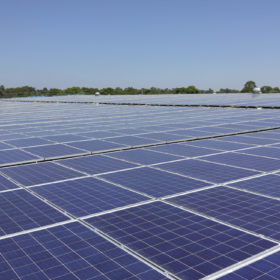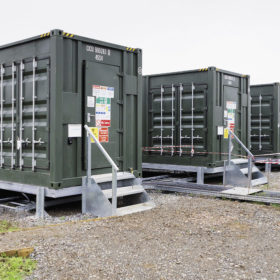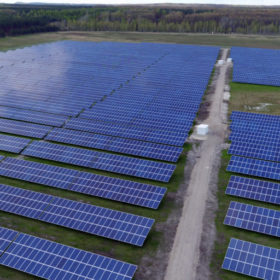Fitch predicts a decade of corporate renewable power procurement growth in the US
Growth in U.S. solar and wind generation capacity will average 7.9% and 3.9%, respectively, between 2022 and 2028 according to Fitch Solutions, who projects almost 120 GW of solar power to be deployed in that period. Corporate clean energy buyers are to be a large part of the trend, and to accelerate deployments during the period.
Mexico may resume cancelled energy auction
Energy minister Norma Rocío Nahle García yesterday announced the tender round believed to have been cancelled in January had merely been held up by the inability of power lines to cope with new generation capacity. The minister added, expanded nuclear capacity is under consideration.
Solar-plus-storage vs grid enhancement, part IV
Co-location of solar and storage may accelerate the deployment of profitable merchant renewable energy projects in the United Kingdom, according to a report by Aurora Energy Research. The study predicts installed solar capacity in the U.K. may increase from around 13 GW next year to 19 GW in 2030 and 32 GW in 2040.
‘The world has no chance of beating climate change if natural gas is part of the mix’
A report by Germany’s Energy Watch Group thinktank has said we would be better off sticking to coal and oil than switching to gas because emissions of methane, the most potent greenhouse gas, caused by gas extraction render any related carbon savings irrelevant.
An organic solar cell for indoor light
A Swedish-Chinese research team has developed an organic cell said to be ideal for wide use in daily life to power internet of things-enabled devices. The cell could be used to power sensors that detect and measure moisture, particle concentrations, temperature and other parameters indoors.
Brexit paralysis and lack of incentives leave community energy facing uphill struggle in the UK
The future benefits of technology such as smart meters and the associated aggregation of small scale generation are not being adequately rewarded, support for solar and wind is being cut off and parliament is fixated solely on one issue.
Solar-plus-storage vs grid enhancement part II
Grid expert Andrea Mansoldo tells pv magazine how energy markets based on solar and storage are feasible as an alternative to costly grid infrastructure work. He says around 6 GWh of battery capacity may be a good alternative to building 1000km of power line or an AC 750 kV high-voltage line.
Germany will need 160 GW of solar by 2030 to prevent power shortages
EuPD Research has calculated what needs to be done to replace the nuclear and coal generation to be phased out in Germany. Accelerated expansion of PV appears the best short-term option. However, storage capacity will need to increase 30-fold by 2040 so solar can become the main pillar of the country’s energy system.
The cooling effect of PV
Research from Finland’s Aalto University claims the residential cooling sector could sustain 540 GW of solar generation capacity if the world’s air conditioning systems were solar powered. Academics say synergies between PV and the cooling industry will become stronger as demand for the latter shifts nearer the equator, where seasonal differences in weather are less pronounced.
The energy transition is easily affordable but all hope of 1.5C warming will vanish in 2028
Technical consultancy DNV GL has published its Energy Transition Outlook 2019. While the electric vehicle, storage and renewable energy industries are likely to see significant rises in demand, the sobering conclusion is the world will miss carbon reduction targets by a long shot.










